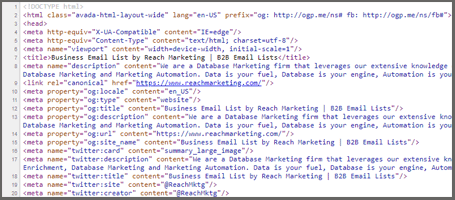 Optimizing your website can seem like an impossible task, but if you break it down into parts, it’s simpler than you might think. Start by focusing on these simple SEO tips that work for every website, and almost any business, to build a solid SEO structure that will have you high up in the search rankings.
Optimizing your website can seem like an impossible task, but if you break it down into parts, it’s simpler than you might think. Start by focusing on these simple SEO tips that work for every website, and almost any business, to build a solid SEO structure that will have you high up in the search rankings.
Create a Solid Structure
Implementing cool, new SEO tips won’t make any difference if your website structure isn’t solid for search. Design your website in a way that makes it easy for search engine crawlers to index, which starts with creating a clearly established page hierarchy.
Your website will need pages, categories, subcategories, headings, subheadings, and an interlinking strategy that glues the website structure together. This not only helps search engines to quickly understand what your website is about, and rank it accordingly, but it also helps your human clients find the information they’re looking for quickly and easily – which means fewer drop-offs and more conversions.
Put Quality First

Quality content isn’t just about words, either. Videos and photos can provide significant engagement, however, it’s important to make sure that they’re clearly labeled and that the meta descriptions match what the content is about, to avoid user or bot confusion.
Lighten your Load
Site speed is one of the top tips in SEO management, so one simple task you could take on would be to improve your website’s loading time. There are several ways to do this. However, one of the easiest ones is to delete any content that’s slowing down your loading. This could be large/old pictures, unused videos or discontinued products; or old website elements such as browser caches, unnecessary CSS or JavaScript.
Confused about where to start? Hire an SEO professional to consult on improving your load speed. A few hours of work here can make a significant difference in your search engine results.
 Go Mobile
Go Mobile
These days, desktop websites are practically passé. Websites built for mobile have become a focal point for both web design and search engine indexing since mobile traffic began to outpace desktop browsing in 2016. That means if you’re out to improve your business’s ranking, you’ll need to go mobile, first.
Hopefully, you’ve designed and built a mobile responsive website from the beginning, however, if you haven’t, now’s the time to start. Focus on mobile UX, design, and loading, and you’ll see your search rankings quickly soar.
Keeping Tabs
No matter what changes your implementing, you need to monitor their effectiveness. Decide on what metric you’re aiming for – is your conversion goal signups, online store purchases, or simply entering customer information in a contact form? Whatever your metric is, keep tabs on all your SEO activities to see what changes will best help you to reach said goals. Try keeping your work to one major change at a time to see what makes the most difference, and remember, SEO is a never-ending game. You’ll need to keep up with market trends to know what changes you should be making on your website, so your business doesn’t get left behind.
You should approach SEO methodically. Try out all your ideas using A/B testing and follow along with the metrics to see what works and what falls flat. Monitoring your successes isn’t just helpful for knowing where to put your resources – it also means you can replicate your work for future projects.


 Go Mobile
Go Mobile